No products in the cart.
Return To Shop
Log in / Sign in
Login
Register
Rated A: Soft-Porn Cinema and Mediations of Desire in India
In the 1990s, India’s mediascape saw the efflorescence of edgy soft-porn films in the Malayalam-speaking state of Kerala. In Rated A, Darshana Sreedhar Mini examines the local and transnational influences that shaped Malayalam soft-porn cinema—such as vernacular pulp fiction, illustrated erotic tales, and American exploitation cinema—and maps the genre’s circulation among blue-collar workers of the Indian diaspora in the Middle East, where pirated versions circulate alongside low-budget Bangladeshi films and Pakistani mujra dance films as South Asian pornography. Through a mix of archival and ethnographic research, Mini also explores the soft-porn industry’s utilization of gendered labor and trust-based arrangements, as well as how actresses and production personnel who are marked by their involvement with a taboo form negotiate their social lives. By locating the tense negotiations between sexuality, import policy, and censorship in contemporary India, this study offers a model for understanding film genres outside of screen space, emphasizing that they constitute not just industrial formations but entire fields of social relations and gendered imaginaries.
______________________________________________________________________________________
A model for future film scholars. The decade-long research that went into making this book is evident in its rich historical details, insightful conversations, and multisited fieldwork. Perhaps even more impressive is Darshana Sreedhar Mini’s ability to pull together such vast and diverse material in a riveting story, so absorbing and beautifully written that I often felt like I was reading a novel. This exemplary work will produce lively discussions about film historiography, diaspora, stardom, authorship, and sexuality.
—Monika Mehta, author of Censorship and Sexuality in Bombay Cinema, 2011
In Rated A: Soft-Porn Cinema and Mediations of Desire in India, Darshana Mini takes readers on a truly fascinating exploration of Malayalam soft-porn cinema that emerged in the 1980s and captivated millions of viewers across India and the Middle East. Extensive archival and ethnographic research reveals the local and global influences that shaped the genre, the social and gendered dynamics of the industry, and the complex politics of sexuality and censorship in contemporary India. By challenging the dominant narratives of pornography as a Western phenomenon, this book provides a new model for studying soft-core film genres in diverse cultural contexts.
—Clarisa Smith, One for the Girls! The Pleasures and Practices of Reading Women’s Porn(2007), Co-editor Porn Studies Journal
Rated A is a fascinating cultural history of Malayalam soft porn cinema, and moreover of its afterlives – how it is remediated across a range of sites, reverberating in the cultural imagination. In the unfolding of that history, Darshana Mini shows how soft porn and the debates and desires that it provokes are entangled with the building of gender, sexuality, politics, and social life. A major new contribution to the study of pornographies.
—Feona Attwood, author of Sex Media (2017) and Co-editor of Porn Studies Journal
______________________________________________________________________________________
DARSHANA SREEDHAR MINI is Assistant Professor of Film at the University of Wisconsin–Madison and co-editor of South Asian Pornographies: Vernacular Formations of the Permissible and the Obscene.
ISBN: 9789390514830
Categories: Books, e-Books, New Releases, New Releases, Non-Fiction, Non-Fiction
Tags: erotic tales, Feminist literature, malayalam cinema, portrayal of women, pulp fiction, soft porn| Binding | |
|---|---|
| Page Count | |
| Author | |
| Year of Publication | |
| Rights |
6 reviews for Rated A: Soft-Porn Cinema and Mediations of Desire in India
Add a review Cancel reply
You must be logged in to post a review.
Related products
Books, Books from the North East, Books from the North East, e-Books, Fiction, Fiction, New Releases, New Releases, Non-Fiction, Non-Fiction
The Many That I Am: Writings from Nagaland
Select format This product has multiple variants. The options may be chosen on the product pageBiographies, Biographies, Books, Books from the North East, Books from the North East, e-Books, Feminism In India Recommends, Feminism In India Recommends, Non-Fiction, Non-Fiction
The Maharaja’s Household: A Daughter’s Memories of Her Father
Select format This product has multiple variants. The options may be chosen on the product pageDo You Remember Kunan Poshpora
Select format This product has multiple variants. The options may be chosen on the product pageMannequin: Working Women in India’s Glamour Industry
Select format This product has multiple variants. The options may be chosen on the product pageFreedom Fables: Satires and Political Writings
Select format This product has multiple variants. The options may be chosen on the product pageBooks, e-Books, Feminism In India Recommends, Feminism In India Recommends, Non-Fiction, Non-Fiction, Young Zubaan
The Yellow Book: A Parent’s Guide to Sexuality Education
Select format This product has multiple variants. The options may be chosen on the product pageBina Das: A Memoir
Select format This product has multiple variants. The options may be chosen on the product pageBooks, e-Books, Feminism In India Recommends, Feminism In India Recommends, Non-Fiction, Non-Fiction
Lady Driver: Stories of Women Behind the Wheel
Select format This product has multiple variants. The options may be chosen on the product pageContact Us
© Zubaan 2019. Site Design by Avinash Kuduvalli.
Payments on this site are handled by CCAvenue.


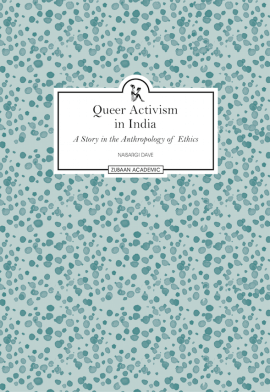
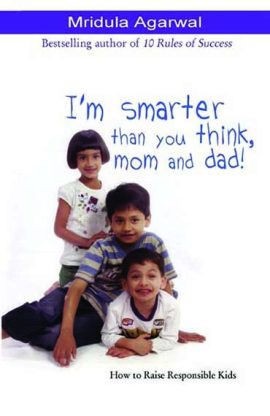
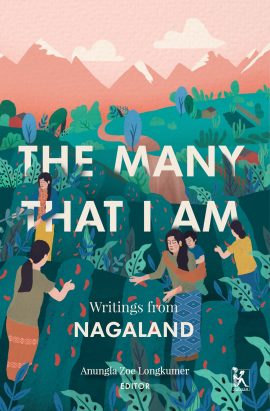
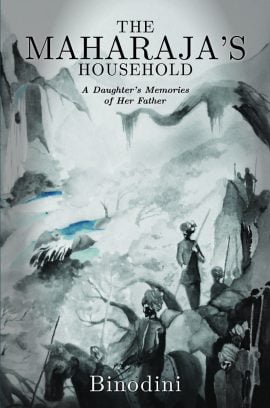
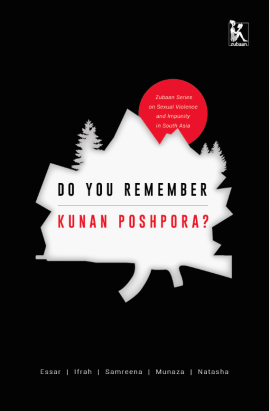
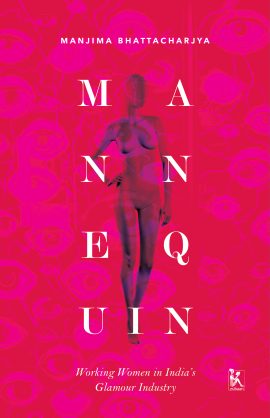
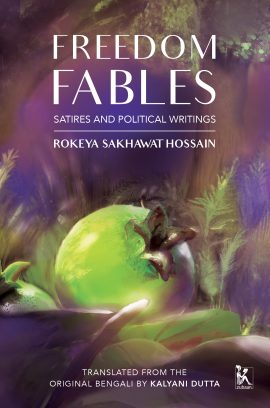
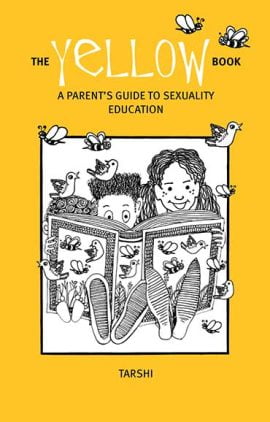
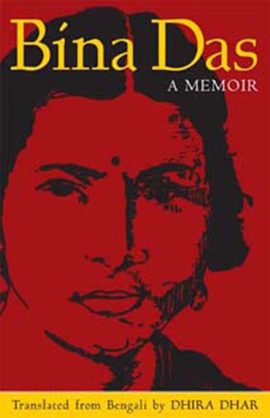

Melissa –
Darshana Sreedhar Mini’s Rated A: Soft-Porn, Cinema and Mediations of Desire in India opens up the world of soft-porn cinema practices and how it has shaped media publics in India. While there have been significant books on the erotic and embodied dynamics of stigmatized performance forms in South Asia, Rated A opens up new terrains for investigation by focusing on the diffuse and non-linear trajectories of soft-porn cinema in the Malayalam speaking state of Kerala. By assembling together and exploring the infrastructures, aesthetic lineages and social spaces of soft-porn cinema, this book unpacks the formations of gender, sexuality and labor through a close engagement with the woman as cine-worker. Thus, the book makes key interventions in debates on gender and labor in sexually charged media and performance spaces in multiple global contexts today. The book addresses a wide audience and is of immense value to professors and graduate and undergraduate students in multiple disciplines such as gender studies, performance studies and film and media studies as well as to cultural practitioners.
Rated A opens up innovative pathways for feminist research on cultural practices especially in terms of methodology. The textured composition of the book, as it assembles together a vast array of materials such as interviews, photographs, posters, advertisements, films, memoirs, fictional writings, personal narratives and observational field-notes, plunges us into the wayward travels of soft-porn outside of its on-screen representational dynamics.
Read the full review by Navaneetha Mokkil here
Melissa –
Darshana Sreedhar Mini’s Rated A: Soft-porn Cinema and Mediations of Desire in India helped me understand why I used to feel similarly confused when I watched the genre of films that Mini investigates in this smartly and inspiringly researched and written book: Malayalam soft-porn cinema from Mini’s and my home state of Kerala in Southern India. In her theoretically grounded Introduction, Mini clarifies that soft-porn cinema distinguished itself from “hard core pornography” in several ways: “The narratives incorporated ‘softness’ in direct opposition to ‘hardcore’ porn. Focusing on female sexual desire, soft-porn films used visual and aural tropes to work through the power of suggestion, often avoiding any direct exposure of genitalia” (p. 18). While genitals are off screen, pornographic framing is used for breasts, particularly, the cleavage, as well as the thighs. This segmentation of women’s anatomy coupled with a sonic overlay that emphasizes women moaning in the throes of orgasm complete the basic soft-porn template (p. 19), though, creative directors use animal montages with horses and cows as
well, as can be seen in the cult soft-porn hit Layanam (dir. Thulasidas, The Dissolution, 1989). Further, Mini points out that by specifically casting actors in the role of a “madakarani,” or a woman whose body was made to carry sexual excess, or “unbridled desires” (madam) as the narrative lead (p. 33), soft-porn films challenged the expected character arc for Malayalam films and Malayali women. Mainstream Malayalam films that starred A-list actors reproduced the status quo of the prescribed social roles of men and women in Kerala society: virile men and chaste women. Mini interprets the gap (my term) between the “narrative role” of the “madakarani” and the “professional distinction as a second-tier laborer” of the actor who played this narrative lead/madakarani role as essentially transforming the character/actor into an “object of social derision because of her perceived moral depravity and availability” (p. 34). This precisely was the point of confusion for me when I watched soft-porn films in the theaters as a young woman in the late eighties and nineties: the protagonist did everything Malayali
women were prohibited to do. Then, why was she the protagonist? Are we supposed to admire her? Are we supposed to loathe her? Rated A provides a categorically clear answer to this question.
Read the full review by Gayatri Devi here
Melissa –
In Rated A you will learn everything about this genre that thrived throughout the 80s, 90s and 2000s. This includes its voluptuously hot leading ladies (with names like Shakeela and Silk Smitha), who took off their neriyathu cloths rather than mundus—on the screens of those palaces and rerun houses, for their overwhelmingly male audiences.
Jump Cut readers interested in so-called “world cinema” are accustomed to exploring genres, auteurs and movements from around the planet, such as national art cinemas, festival hits, and traditions of dissident documentary–more accessible and canonizable than B-movie local potboilers. Mini confirms that we need to broaden our scope. Her title Rated A references the official “Adult” rating that her corpus of such movies would routinely receive from India’s ludicrously bureaucratic, censorious yet ultimately ineffectual Central Board of Film Certification—whose nefarious impact on the world’s largest national cinema has already been the topic of several books. Indeed censorship debacles and dynamics provide a fascinating backdrop for Mini’s history. […]
Mini’s impeccably interdisciplinary set of methodologies includes on-location ethnography, oral histories and interviewing, textual, genre and star analysis, and media industry archival research, carried out over more than a decade—even in the Gulf States, where resides a huge cinephile Kerala diaspora. Having been trained in textual analysis in the 1970s, I especially enjoyed her one exceptional excursus into detailed study of a single film, the Hindi-titled but Chennai-produced “sex education” blockbuster Main aur Tum (You and me, Harihar, 1987). This rich mishmash of recycled imports on STI’s and childbirth etc. etc., is framed through indigenous materials on “wedding nights”, orgasm, and contraception, etc., etc., all organized around the role of a glib sexologist played by Bollywood “heavy” star Om Shivpuri. (In researching this review, I was fortunate to snag a 7-minute excerpt on YouTube; Mini was able to see the whole thing on 16mm, thanks to the film’s friendly producer.) I would have appreciated more textual analysis throughout the book, but I empathize fully with Mini’s challenge in the face of an evanescent and volatile corpus.
Read the full review by Thomas Waugh here
Melissa –
Rated A: A Cultural History of Malayalam Soft-Porn by Darshana Sreedhar Mini is an interesting window into this peculiar corner of Indian cinema. This is Sreedhar Mini’s first book and is based on her doctoral thesis. The title might prompt one to expect a titillating footnote in film history, but what unfolds is far more intellectually provocative.
Sreedhar Mini, an assistant professor of film at the University of Wisconsin-Madison, is also the co-editor of South Asian Pornographies: Vernacular Formations of the Permissible and the Obscene. The book draws from her decade-long research involving fieldwork, archival research, and interviews with film industry personnel.
Much like Elena Gorfinkel’s Lewd Looks: American Sexploitation Cinema in the 1960s and Cut-Pieces: Celluloid Obscenity and Popular Cinema in Bangladesh by Lotte Hoek, Sreedhar Mini approaches her subject with rigour to examine how this culturally specific form of erotica operated within the networks of labour, censorship, and transnational circulation. Her analysis sheds light on broader questions of gender, class, and regional identity in South Asian media.
Sreedhar Mini explores how these films created their own economic ecosystem, operating in the liminal spaces between legitimate cinema and outright pornography. The industry’s reliance on pseudonymous credits and informal distribution networks speaks to an almost theatrical performance of respectability politics—neither fully underground nor entirely above board.
Read the full review by Jinoy Jose P. here
Melissa –
The book consists of five chapters, each offering a detailed examination of various aspects of Malayalam soft-porn cinema and its broader implications.Chapter one delves into the portrayal of women in Indian cinema, particularly focusing on the stereotype of the madakarani or sex siren. It examines how films like The Dirty Picture (Milan Luthria, 2011) perpetuate his image, objectifying women like Silk Smitha and framing their lives within narratives of moral and professional decline. The text explores how film journalism and historical accounts have shaped the image of female actors, often conflating their work with prostitution and shaming them for their sexuality. The chapter argues for a feminist approach to understanding these dynamics and calls for a critical examination of obscenity discourse in cinema.
Read the full review by Muhsina Najeeb, Central University of Kerala, India here
Melissa –
In Rated A: Soft-Porn Cinema and Mediations of Desire in India, Darshana Sreedhar Mini tackles a controversial and underexplored area of Indian cinema, the Malayalam soft-porn genre. Through a blend of meticulous scholarship and personal narrative, Mini challenges the conventional dismissal of this genre as lowbrow or irrelevant. Opening with a vivid anecdote about her observations in her father’s store, where customers discreetly purchased sensational magazines, Mini captures the societal tension surrounding soft-porn cinema. This anecdote serves as a microcosm of the larger socio-political dynamics her book seeks to unpack, connecting the personal with the broader cultural landscape. Published in 2024 by the University of California Press as part of the Feminist Media Histories series, Mini’s book offers an in-depth examination of a genre that has thrived at the margins of Indian cinema. Her work is an ambitious attempt to unpack the layers of cultural, economic, and political forces that have shaped Malayalam soft-porn films. By exploring the intersections of gender, labour, censorship, and globalization, Mini provides a comprehensive understanding of how this genre mediates desire and reflects societal anxieties.
Read the full review by Bibin Sebastian, Department of Languages, Rajagiri College of Social Sciences (Autonomous), Kalamassery, India, here